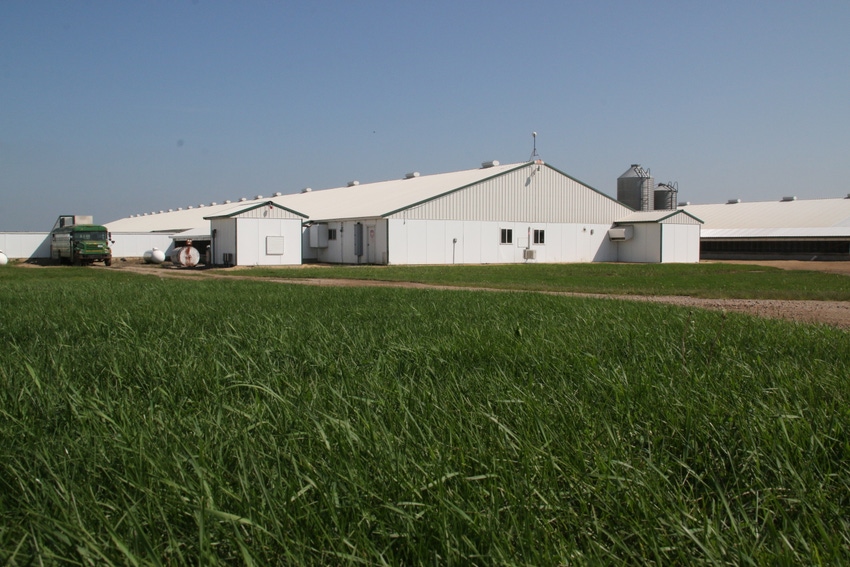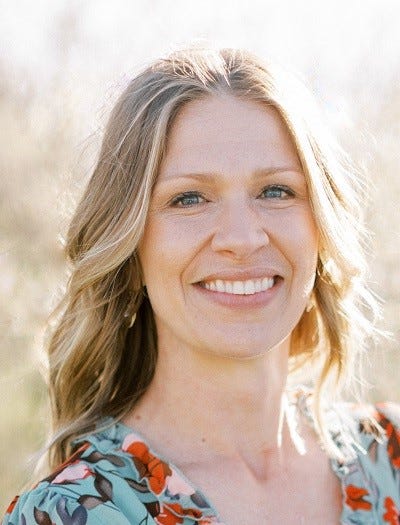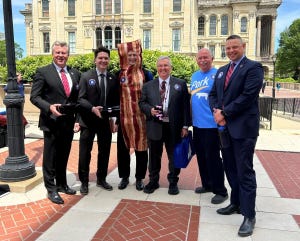What happens if ASF is detected in the United States?
Length and size of outbreak will depend upon biosecurity practices and how early disease is detected.

If African swine fever (ASF) does emerge in the U.S., it will, at least initially, have a significant effect on daily operations, according to Dr. Jack Shere, associate administrator of USDA’s Animal and Plant Health Inspection Service (APHIS), said during USDA’s African Swine Fever Action Week. However, the length and size of the outbreak will depend upon biosecurity practices and how early the disease is detected, he said.
Following the discovery of an outbreak, Shere said Secretary of Agriculture Tom Vilsack would likely declare an extraordinary emergency. APHIS would lead a coordinated national approach for control and eradication and ensure that the funding and resources necessary for the response.
Shere said APHIS would also issue a national standstill for at least 72 hours to prohibit all movement of swine. “This would increase our ability to stop the disease spread and to act quickly to restore movement on a regional basis.”
Producers would immediately need to elevate biosecurity protocols to protect their herd during this time. Any signs of ASF would need to be reported to a veterinarian or State Animal Health Official.
On the processing side, plants would need to reschedule incoming loads, so delays would be likely.
USDA and States would regularly provide updates on a variety of channels to keep the public informed.
From there, USDA would work to determine where ASF is in the U.S. and determine next steps. That would involve contract tracing of all infected pigs, Shere explained.
Based upon the findings, Dr. Rosemary Sifford, deputy administrator of veterinary services for APHIS, said some regions would continue to have movement restrictions while others may be able to resume operations.
All herds associated with a company that has an outbreak could be quarantined even if the farm isn’t in the same region or no disease is detected. Additionally, a herd that has tested negative but is within a quarantined “Control Area” will continue to be monitored and require permitted movement.
Detecting the disease
Sifford said one of the things that makes ASF a challenge is that it is not a disease that has a lot of pathognomonic signs.
“It is not a disease that you can look at an animal and very easily say those signs mean that it has African swine fever and nothing else.”
According to Dr. Sifford, clinical signs for the disease can look like a lot of other diseases, making it hard to detect. This is one of the reasons APHIS encourages submission for foreign animal disease diagnostics when you see any sort of clinical sign of African swine fever so it can be ruled out. These signs include weakness, coughing, red or dark colored skin around the ears and blood clots under the skin.
“The sooner we identify these sick pigs and are able to stop the spread of the disease, the better,” she noted.
Dr. Sifford emphasized the importance of producers having a good biosecurity plan in place so they can be practiced and comfortable with it if an outbreak occurs.
If ASF is discovered at a facility, USDA will work closely with the producer and State partners through the depopulation, reimbursement, cleaning and disinfection and then restocking process. Sifford said the timing of when restocking may occur will depend upon whether outbreaks are still occurring in the region.
Dr. Jeff Kaisand, state veterinarian of Iowa, discussed the fact that a foreign animal disease becomes a regulatory disease.
“One of the things that we think about all the time during a foreign animal disease is that we can’t eliminate the industry while eliminating the disease, but we also can’t let the disease eliminate the industry,” he said. “That interface is a fine line, and in fact, it can be very ugly at times.”
The process is often very difficult for the people or producers involved in an outbreak.
In addition to establishing Control Areas, Kaisand explained that sometimes premises outside of the Control Area need to be quarantined because they are connected to premises within the Control Area. Kaisand said that when trying to control an outbreak and through the 72-hour standstill, the number of connections outside of premises, whether it be a mechanic, veterinarians, feed delivery, manure hauling, live animals, garbage, etc., make tracing difficult. This is where Network Based Controls (NBC) come into play as locations connected to an infected premises need to be quarantined for tracing.
Everyone’s help is needed during this process, he said, adding that record keeping also becomes critical.
Lesson learned from avian influenza
Using her experience from dealing with highly pathogenic avian influenza (HPAI), Dr. Beth Thompson, State Veterinarian of Minnesota, provided recommendations for producers. Of great importance is ongoing dialogue between regulators, producers, veterinarians and anyone else involved in the process.
According to Dr. Thompson, lessons learned during HPAI include:
Don’t ever assume you are smarter than the virus. In Minnesota, 108 premises ended up being affected and 9 million birds were depopulated or died from the virus.
Think about what may be needed for surveillance. Even if there are still unknowns, think about what might be needed for testing and reporting, or what can be done beforehand to get a schedule in place.
Have people available, either on site or within your system, who can be easily reached and can answer questions as the come up. Keep the numbers small but have point people who can help flow of information.
Make sure that unaffected sites are sufficiently staffed. Work still needs to be done on disease-free sites. Make sure paperwork for the disease-free sites is current in case they become part of a Control Area.
Keep employees in the loop. Keep employees involved by allowing them to participate in the decision-making processes.
About the Author(s)
You May Also Like




